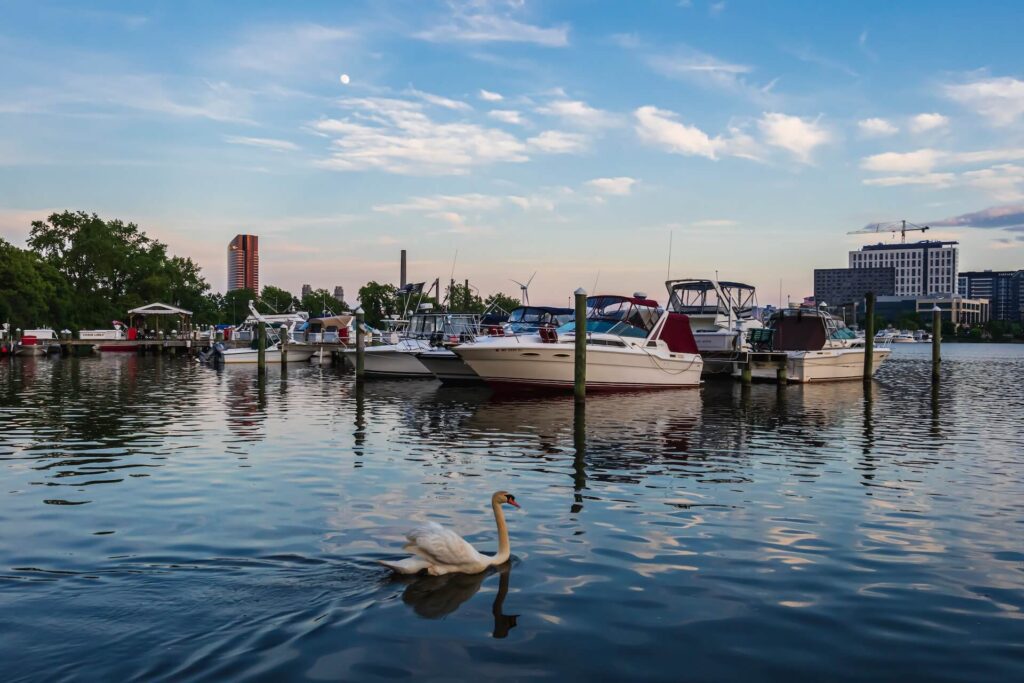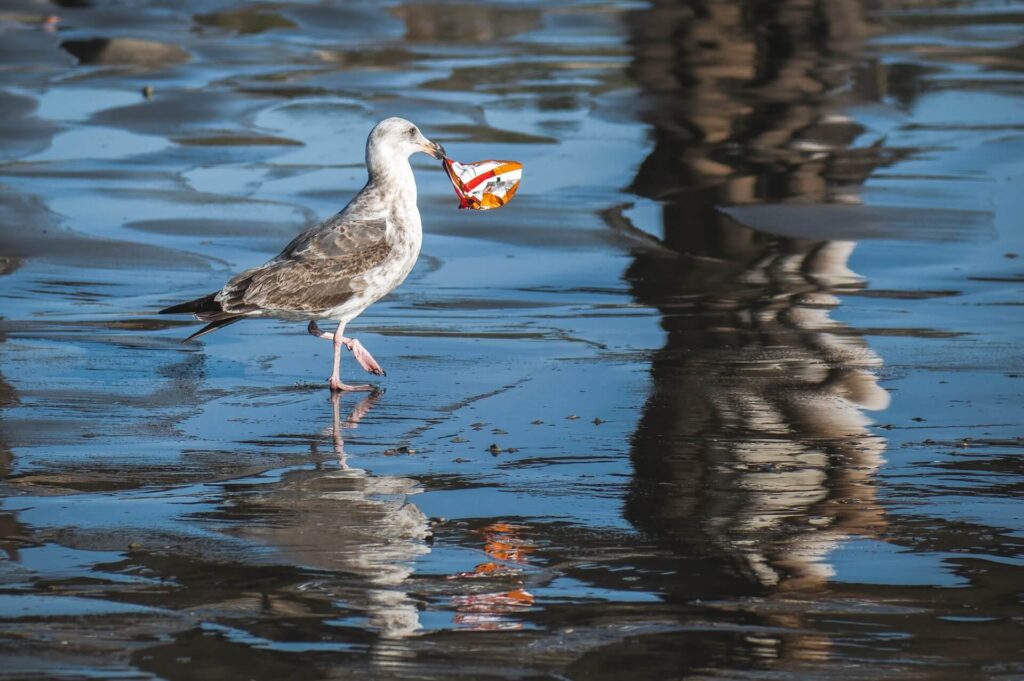Duck Conservation: Habitat Loss Effects and Pollution Impact
Greer Smith
December 16, 2023

Waterfowl transcend being mere inhabitants of ecosystems; they are the essence of the delicate harmony within these environments. Their habitats, teeming with sustenance, shelter, and breeding grounds, serve as the lifeblood of their existence.
In this blog, we discuss the significance of waterfowl, their pivotal role in upholding biodiversity, and the profound challenges arising from human-induced habitat loss effects and pollution.
With an unwavering passion for conservation, let’s address the pressing issues affecting these avian marvels and intricate ecosystems by educating ourselves on the following.
Understanding Waterfowl
Within the realm of waterfowl, a diverse number of species awaits exploration, each boasting its distinct attributes and behaviors. From the regal swans to the spirited duck breeds, these birds captivate with their webbed feet, plump bodies, elongated necks, and compact wings. However, their visual allure and physical attributes are just the beginning. Waterfowl strategically select nesting sites near water bodies and distribute other organisms within wetland ecosystems.
During the fall, they orchestrate a symphony of life, connecting distant wetlands through seasonal migrations. Their course facilitates the exchange of plant and animal species, bridging gaps across vast distances. As they journey from Arctic breeding grounds to wintering sites in regions like California and South America, waterfowl become essential players in upholding the delicate ecological balance.
In addition, their occupation contributes to the intricate nutrient cycling processes within wetlands, ensuring the sustainability of these crucial ecosystems. Understanding birds and pollution is not merely a scientific pursuit; it is the key to unraveling the complex web of life in wetlands, where habitat loss effects and environmental challenges loom large.
Habitat Loss Effects and Their Impact on Waterfowl
The relentless encroachment of urbanization, the expansion of agricultural practices, and the deliberate draining of wetlands cause devastating consequences for waterfowl. Ducks, geese, and swans have distinct nesting and breeding requirements, which compete with urban development and agricultural activities for limited water resources.
As a result, not only are their habitats diminishing, but the survival of offspring is also endangered by increased disturbances and an upsurge in predators within these modified landscapes. In addition, the consequences of habitat degradation and fragmentation are dire. Birds and pollution don’t mix. With increasing numbers of invasive species and excessive exploitation of natural resources, waterfowl have fewer places to thrive.
Particularly concerning is the loss of crucial stopover sites during their migratory journeys. These sites serve as vital rest stops, offering refuge, nourishment, and protection during the birds’ arduous migrations. Sadly, the quantity and quality of stopover habitats are dwindling, posing a grave threat to their existence as they confront the challenges of habitat loss effects.
Effects of Pollution on Avian Species

The avian world, particularly waterfowl, is under the ominous shadow of various forms of pollution, ranging from oil spills to heavy metals and chemical runoff. The devastating consequences of oil spills are evident, causing harm through oiled feathers and ingestion. However, the insidious nature of pollutants doesn’t stop there.
Estuaries laden with toxic substances pose significant threats to the health and reproduction of avian species. Industrial sources introduce lead into these ecosystems, accumulating within the tissues of waterfowl and jeopardizing their well-being. Beyond individual birds, pollution disrupts entire aquatic ecosystems and their prey species, creating a domino effect.
Heavy metals and pesticides contaminate fish, leading to deformities and severe health issues, disrupting the food supply chain for ducks, geese, swans, and their avian counterparts. This far-reaching impact on avian species highlights the urgency of addressing the intertwined challenges of habitat loss effects and pollution.
Strategies for Waterfowl Conservation
Cooperative endeavors involve a range of approaches, incorporating governmental policies, non-profit organizations, environmentally responsible companies, and grassroots movements. For instance, the Migratory Bird Treaty Act of 1918 confronts the issue of birds and pollution head-on. It exemplifies international cooperation, ensuring the survival of migratory bird species native to the United States and its regions.
Additionally, non-profits have forged alliances between the public and private sectors, aiming to rejuvenate waterfowl populations by preserving their habitats. Initiatives like Partners in Flight bring together government bodies, conservation organizations, and industry players to bolster monitoring, research, and educational initiatives focused on birds and their living environments.
Crucial strategies of waterfowl conservation include restoration and preservation techniques, ranging from wetland conservation to reforestation. Each aims to revive valuable ecosystems and reverse habitat loss effects. By utilizing these methods, we can effectively mitigate the human impact of pollution, fostering a hopeful future for waterfowl populations.
Ongoing Challenges and Future Outlook
While birds and pollution remain the top priorities, other formidable challenges lie ahead. Shifting precipitation patterns and rising sea levels are potential issues. Each poses a viable threat to wetlands and waterfowl populations. With the increase in extreme weather events and unpredictable seasonal changes, habitat loss effects accelerate.
Invasive species, capable of causing extinctions, disrupting biodiversity, and altering habitats, further jeopardize the delicate balance of waterfowl ecosystems. Therefore, continual research and population monitoring are necessary. Long-term studies and migration tracking offer invaluable insights and data to understand past events and prepare for the future.
In North America .8% of wetlands habitat is destroyed every year. Technology advancements in waterfowl research, particularly modern GPS tracking and data analysis, increase our understanding of bird behavior and ecology. This enhanced knowledge serves as a foundation for developing more effective conservation methodologies. With accurate information, conservation efforts will alleviate habitat loss effects and protect these avian species and the environments they rely upon.
Wrapping Up
In conclusion, our exploration of waterfowl conservation has shed light on the intricate dynamics and significance of avian species within wetland ecosystems. We uncovered the true meaning behind habitat loss effects and touched on the detrimental effects of human impact, understanding the urgency to act to protect these invaluable habitats.
Ultimately, this discussion extends beyond birds and pollution. It reminds us all of the broader environmental challenges we face. Join forces with the 50 Ducks family and our partners today. With your help, we can preserve wetlands for a more sustainable future. Let’s protect our beloved ducks, geese, and the ecosystems they call home.
